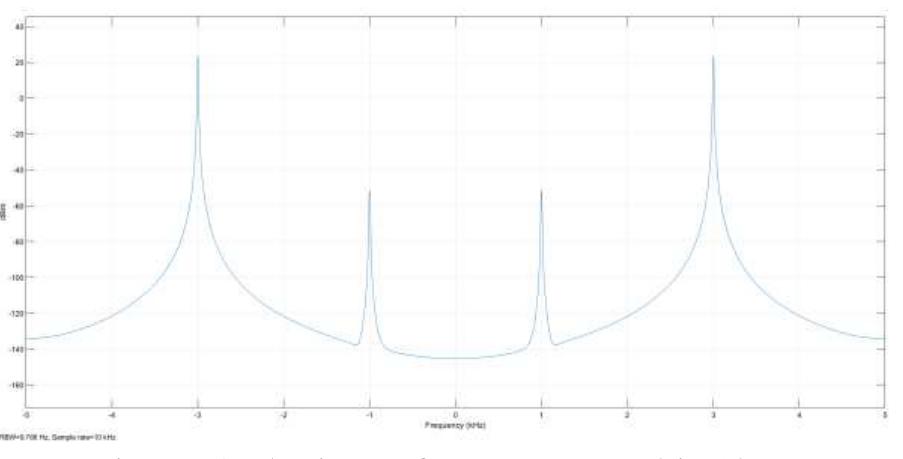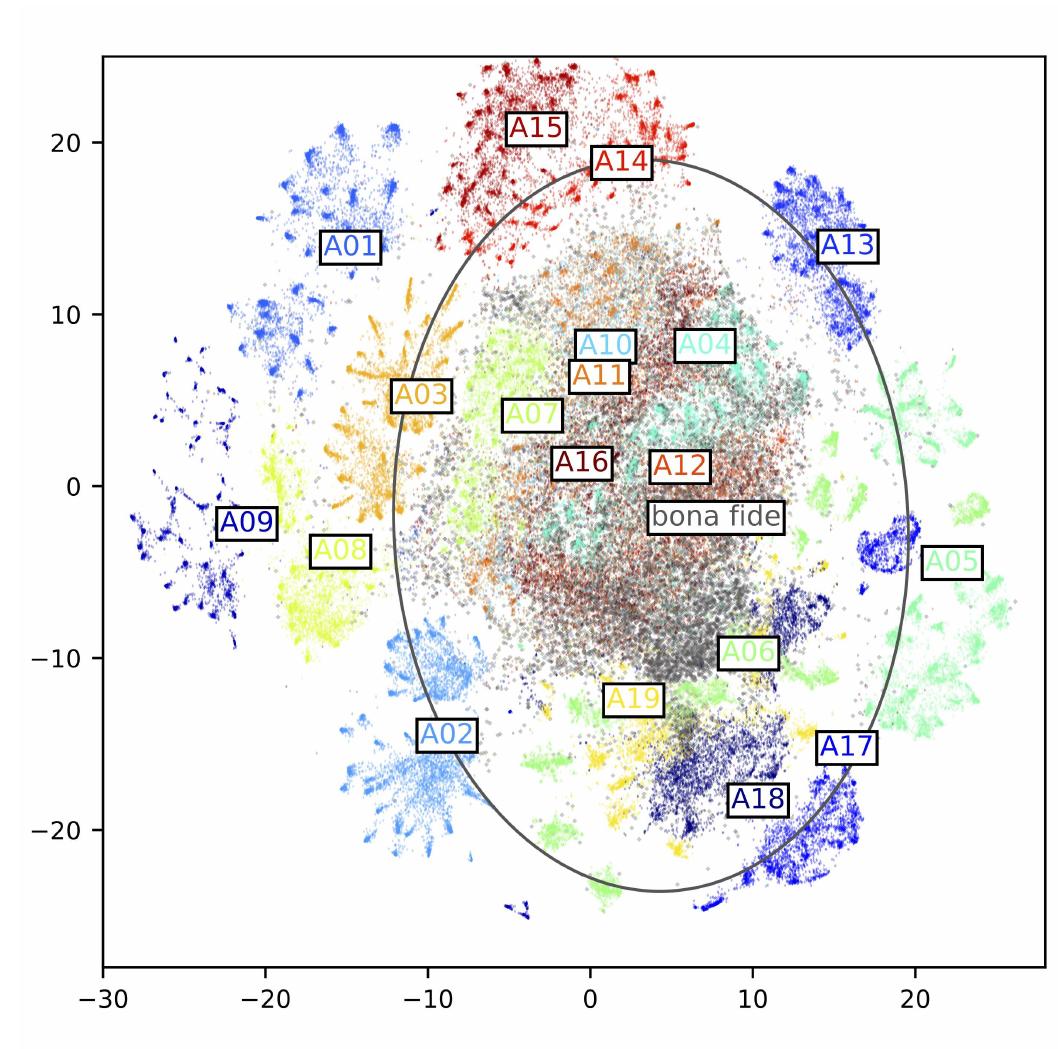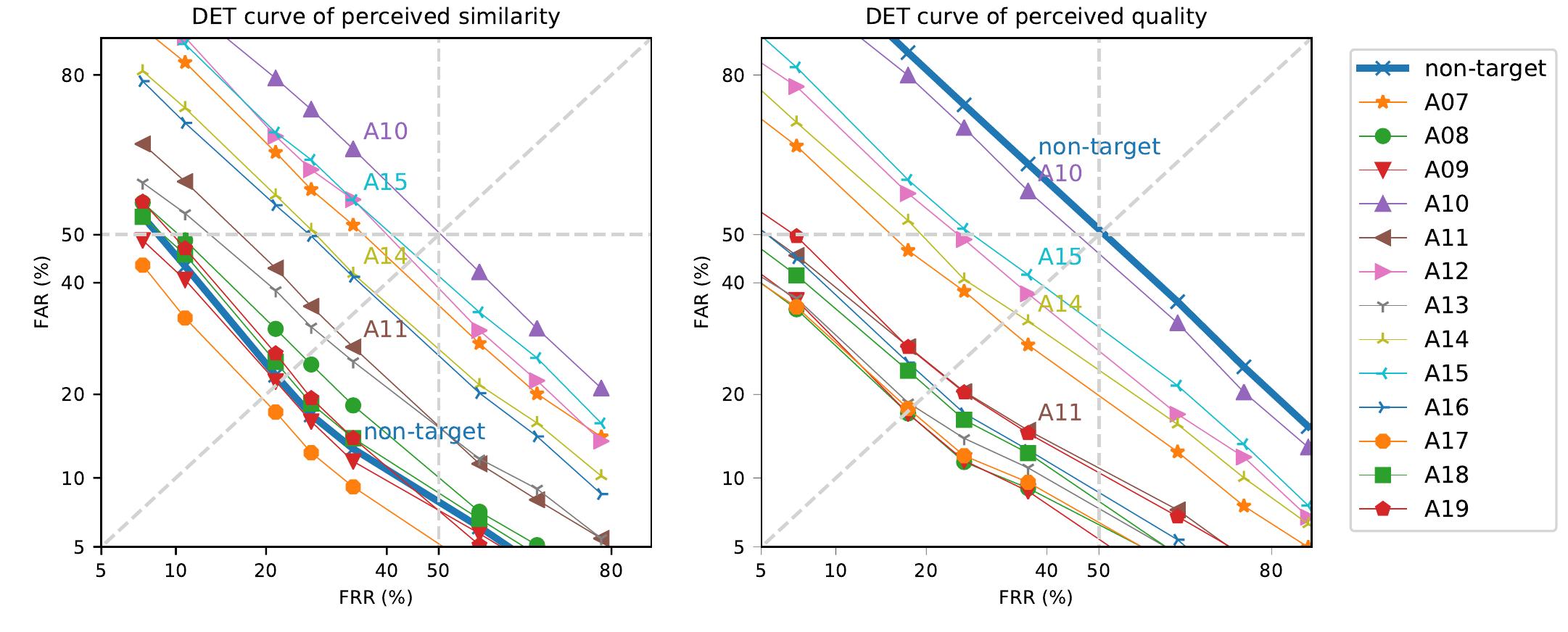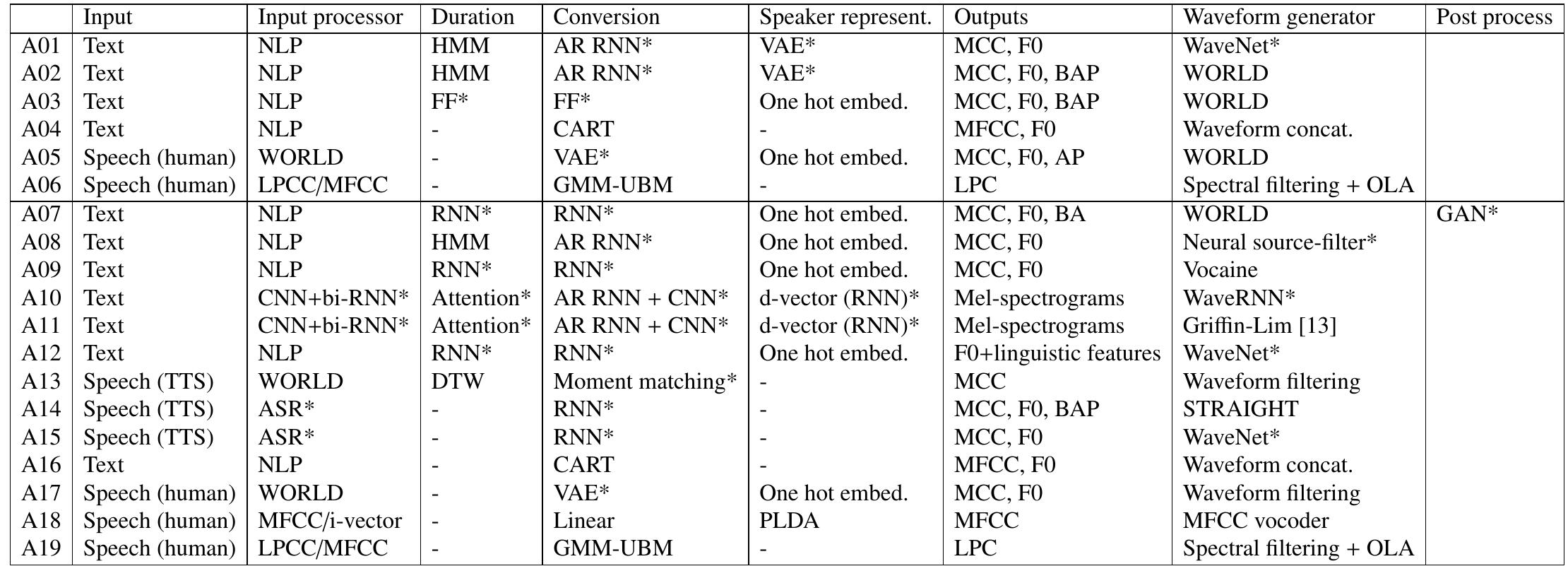This paper proposes text independent automatic speaker verification system using IMFCC (Inverse/ Reverse Mel Frequency Coefficients) and ITEM (Information Theoretic Expectation Maximization). To perform speaker verification, feature... more
Speaker verification (SV) is the process of verifying whether speech from two audio signals originate from the same speaker or different speakers. Current state-of-the-art SV systems are based on deep neural networds, predominantly... more
Speaker modeling distance normalization (D-Norm) is one of the important score normalization techniques in speaker verification (SV) system. For D-Norm implementation, it doesn’t need any additional speech data or external speaker... more
In this paper we report the experiment carried out on recently collected speaker recognition database namely Arunachali Language Speech Database (ALS-DB)to make a comparative study on the performance of acoustic and prosodic features for... more
Bibliography: leaves 95-104.Speech recognition systems all have one criterion in common; they perform better in a controlled environment using clean speech. Though performance can be excellent, even exceeding human capabilities for clean... more
In this paper, we present a novel technique for the estimation of the high frequency components (4-8kHz) of speech signals from narrow-band (0-4 kHz) signals using convolutive Non-Negative Matrix Factorisation (NMF). The proposed... more
This paper is concerned with the task of speaker verification on audio with multiple overlapping speakers. Most speaker verification systems are designed with the assumption of a single speaker being present in a given audio segment.... more
Keeping track of the multiple passwords, PINs, memorable dates and other authentication details needed to gain remote access to accounts is one of modern life's less appealing challenges. The employment of a voice-based verification as a... more
Automatic recognition of emotions in speech has attracted the attention of the research community in recent years. Some of the most relevant proposed applications of it are in call-centers. In these scenarios the speech is distorted by... more
This paper introduces an evolutionary approach for training the adaptive network-based fuzzy inference system (ANFIS). The previous works are based on gradient descendent (GD); this algorithm converges very slowly and gets stuck down at... more
This paper presents new method for improving the security of speaker recognition in case of spoofing attack. In the proposed technique, digital speech watermarking has been applied on speech signal to increase robustness. To achieve this... more
Research on speaker recognition is extending to address the vulnerability in the wild conditions, among which genre mismatch is perhaps the most challenging, for instance, enrollment with reading speech while testing with conversational... more
Today, the application of artificial neural network tools to define models that mimic the dynamic behavior of structural systems is a widespread approach. A fundamental issue in developing these strategies for damage assessment in civil... more
This paper describes three studies conducted with a total of 114 individuals with hearing loss and 12 hearing controls, with the goal of investigating the impact of audio quality parameters on the accessibility of voice... more
Over the recent years, various self-supervised contrastive embedding learning methods for deep speaker verification were proposed. The performance of the self-supervised contrastive learning framework highly depends on the data... more
Over the recent years, various self-supervised contrastive embedding learning methods for deep speaker verification were proposed. The performance of the self-supervised contrastive learning framework highly depends on the data... more
Voice conversion for speaker anonymization is an emerging concept for privacy protection. In a deep learning setting, this is achieved by extracting multiple features from speech, altering the speaker identity, and waveform synthesis.... more
Keeping track of the multiple passwords, PINs, memorable dates and other authentication details needed to gain remote access to accounts is one of modern life's less appealing challenges. The employment of a voice-based verification as a... more
Speaker recognition is challenging in real-world environments. Typically, studies approach noises only in an additive manner. However, real environments commonly present reverberating conditions that worsen speech processing. When not... more
Text categorization is widely used when organizing documents in a digital form. Due to the increasing number of documents in digital form, automated text categorization has been emerged as an appropriate tool to classify documents into... more
In this paper we present an efficient method for training models for speaker recognition using small or under-resourced datasets. This method requires less data than other SOTA (State-Of-The-Art) methods, e.g. the Angular Prototypical and... more
Although speaker verification has conventionally been an audio-only task, some practical applications provide both audio and visual streams of input. In these cases, the visual stream provides complementary information and can often be... more
A straightforward and efficient implementation of the factor analysis model for speaker verification
For a few years, the problem of session variability in textindependent automatic speaker verification is being tackled actively. A new paradigm based on a factor analysis model have successfully been applied for this task. While very... more
As acoustic signal generated from vocal folds is directly affected by vocal tract pathologies, it can be an effective tool for diagnosis purpose. In this work, we present an efficient method for voice pathology detection based on speech... more
The embedding-based deep convolution neural networks (C-NNs) have demonstrated effective for text-independent speaker verification systems with short utterances. However, the duration robustness of the existing deep CNNs based algorithms... more
This study proposes a novel scheme of syllable-dependent discriminative speaker embedding learning for small footprint text-dependent speaker verification systems. To suppress undesired syllable variation and enhance the power of... more
The embedding-based deep convolution neural networks (C-NNs) have demonstrated effective for text-independent speaker verification systems with short utterances. However, the duration robustness of the existing deep CNNs based algorithms... more
Introduction The literature reports on high-frequency audiometry as one of the exams used on hearing monitoring of individuals exposed to high sound pressure in their work environment, due to the method s greater sensitivity in early... more
In this study, the researcher investigates one of the testing procedures on acquiring the unknown sampling frequency which is relevant in (ADC) Analog-to-Digital Conversion on Digital Signal Processing. With the help of the Simulink tool... more
The impact of speech compression in the automatic classification of speakers with Parkinson's disease (PD) and healthy controls (HC) is tested. The set of codecs considered to compress the speech recordings includes G.722, G.226, GSM-EFR,... more
The purpose of this study is to discuss the design and implementation of autonomous surface vehicle (ASV) systems. There’s a lot riding on the advancement and improvement of ASV applications, especially given the benefits they provide... more
We aim to describe different approaches for vector quantization in Automatic Speaker Verification. We designed our novel architecture based on multiples codebook representing the speakers and the impostor model called universal background... more
State-of-the-art text-independent speaker recognition systems for long recordings (a few minutes) are based on deep neural network (DNN) speaker embeddings. Current implementations of this paradigm use short speech segments (a few... more
This paper describes the systems developed by the JHU team for the speaker recognition track of the 2019 VOiCES from a Distance Challenge. On this far-field task, we achieved good performance using systems based on state-of-the-art deep... more
Large-scale mobile communication systems tend to contain legacy transmission channels with narrowband bottlenecks, resulting in characteristic 'telephone-quality' audio. While higher quality codecs exist, due to the scale and... more
IRISA (1) KTH (2) KUN (3) ENST (4) UBS-Ubilab (5) IDIAP (6)
IRISA (1) KTH (2) KUN (3) ENST (4) UBS-Ubilab (5) IDIAP (6)
The effectiveness of introducing deep neural networks into conventional speaker recognition pipelines has been broadly shown to benefit system performance. A noveltext-independent speaker verification (SV) framework based on the triplet... more
Forensic investigation often uses biometric evidence as important aids for identifying the culprits. Speech is one of the easily available biometrics in today's hi-tech world. But, most of the speech biometric evidence acquired for... more
Feature selection is an important preprocessing step in machine learning and pattern recognition. The ultimate goal of feature selection is to select a feature subset from the original feature set to increase the performance of learning... more
In this paper we propose a digit-based text-dependent speaker verification system (SVS) in Spanish. The system uses word level Hidden Markov Models (HMM) as classifiers and Frequency Cepstral Coefficients (MFCC) with Cepstral Mean... more
Speaker verification is an essential task in speech processing with great authentication and surveillance applications. Large-scale datasets have hugely contributed to the success of neural networks for speaker verification. However, in... more
Automatic speaker verification (ASV) is one of the most natural and convenient means of biometric person recognition. Unfortunately, just like all other biometric systems, ASV is vulnerable to spoofing, also referred to as "presentation... more
State-of-the-art speaker recognition systems performance degrades considerably in noisy environments even though they achieve very good results in clean conditions. In order to deal with this strong limitation, we aim in this work to... more
Speaker verification has recently been introduced to the forensic field as a new and complimentary approach to other forensic methods. With the advancement in speech communication technologies including voice over IP and wireless... more
"C-Tio.br rogeroclaritytechinc.com Absfrm-Noise robustness of automatic speaker verification systems is crucial in real life applications. A study on the performance of several spectral subtraction-based speech enhancement techniques... more
Speech is composed of different sounds (acoustic segments). Speakers differ in their pronunciation of these sounds. The segmental approaches described in this paper are meant to exploit these differences for speaker verification purposes.... more
Acoustic noise is a big challenge for speaker recognition systems. The state-of-the-art speaker recognition systems are based on deep neural network speaker embeddings called xvector extractor. A noise-robust x-vector extractor is highly... more













































